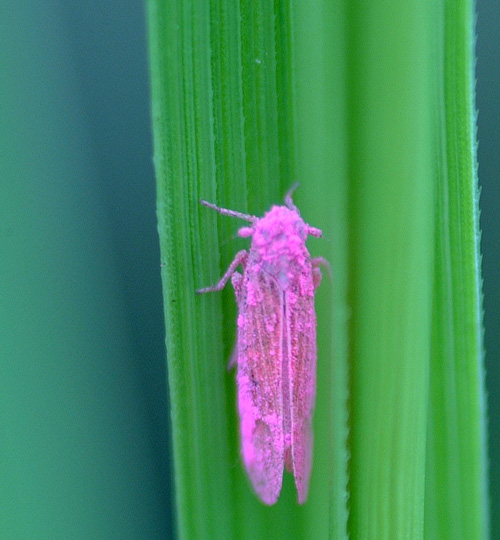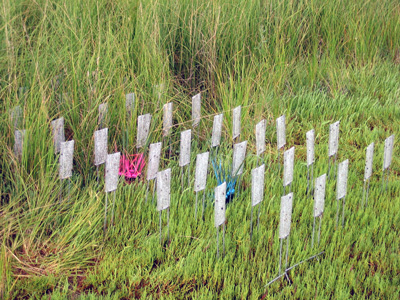Host-Parasitoid Spatial Ecology
One of my long-standing research interests has focused on the role of habitat fragmentation and landscape heterogeneity on predator-prey spatial and temporal population dynamics. Much of this research was conducted in the tallgrass prairies of North Dakota and focused on the interaction between the planthopper Prokelisia crocea and its egg parasitoid Anagrus columbi that coexist among discrete patches of prairie cordgrass. This project was initiated in 1997 and was supported by three NSF grants:
NSF Ecological Studies Grant, 2005. Collaborative Research: Linking dispersal to landscape-level dynamics of a predator and prey (DEB-0515764). $273,275. Funding period: 1 Sept. 2005 to 31 Aug. 2008. Includes two REU Supplements.
NSF Ecological Studies Grant, 2002. Landscape heterogeneity, patch connectivity, and host-parasitoid population dynamics (DEB-0211359). $363,558. Funding period: 1 Sept. 2002 to 31Aug. 2005. Includes two REU Supplements.
NSF Ecological Studies Grant, 1999. Inter-patch movement, oviposition behavior and host-parasitoid population dynamics (DEB-9973789). $236,934. Funding period: 1 July 1999 to 30 June 2003. Includes one REU Supplement.
Refer to the links below for a more detailed description of the study system, an overview of the findings from our research, and a description of one of the new directions we are taking with this system.







